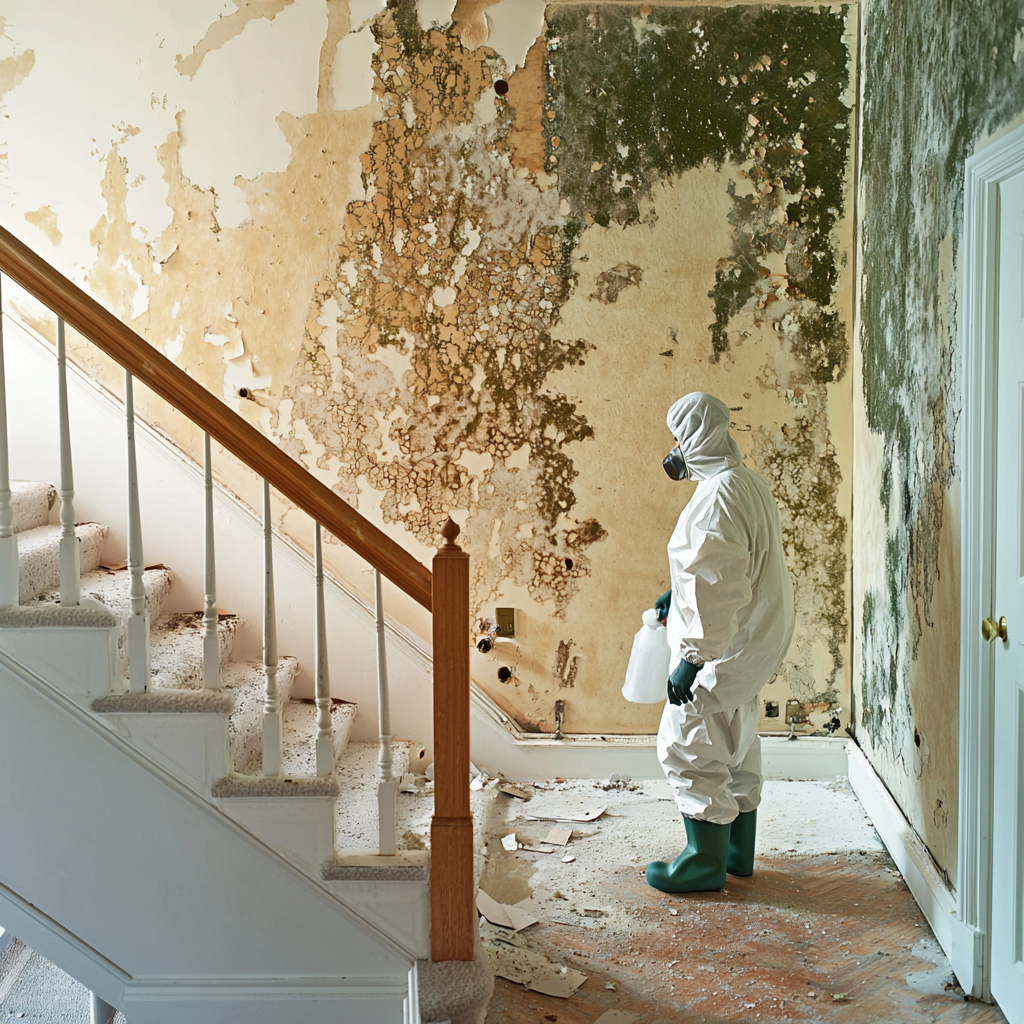Seattle is known for its rainy winters, and February is one of the wettest months of the year. With constant moisture, limited sunlight, and cooler temperatures, mold can thrive in homes and businesses.
✔ Why February is a High-Risk Month for Mold in Seattle:
- Consistently High Humidity – Prolonged wet conditions create the perfect environment for mold growth.
- Leaks & Water Intrusion – Heavy rainfall increases the risk of roof leaks, basement flooding, and water damage.
- Poor Ventilation – Sealed windows and reduced airflow allow moisture to accumulate indoors.
- Unnoticed Condensation – Moisture buildup on walls, ceilings, and cold surfaces provides the perfect breeding ground for mold spores.
Without proper prevention and quick response, mold can spread rapidly, causing health risks and property damage.

Signs You May Have a Mold Problem
If you notice any of these warning signs, you might have a hidden mold infestation:
✔ Persistent Musty Odors – A damp, earthy smell that won’t go away.
✔ Visible Mold Spots – Dark patches on walls, ceilings, or floors.
✔ Increased Allergy Symptoms – Sneezing, coughing, or itchy eyes indoors.
✔ Warped or Discolored Walls – Water damage often leads to hidden mold growth.
✔ Condensation on Windows & Walls – Excess moisture in the air encourages mold to grow.
If left untreated, mold can spread quickly, damaging walls, furniture, carpets, and even HVAC systems.

What to Do If You Find Mold in Your Home
1. Do Not Disturb the Mold
- Avoid scrubbing or wiping mold, as this can release airborne spores.
- Limit airflow in the affected area by turning off fans and HVAC systems.
2. Control Indoor Moisture
- Open windows and doors to increase ventilation.
- Use a dehumidifier to keep humidity levels below 50%.
- Wipe down condensation-prone surfaces regularly.
3. Document the Damage for Insurance
- Take photos and videos of mold-affected areas.
- Keep records of any previous water leaks or flooding.
- Contact your insurance provider to check mold remediation coverage.

How 911 Restoration Seattle Handles Mold Remediation
As the top restoration company in Seattle, we offer professional mold inspection, removal, and prevention.
1. Comprehensive Mold Inspection & Testing
✔ Identify the type and extent of mold growth.
✔ Use moisture meters to locate hidden leaks.
2. Professional Mold Containment & Removal
✔ Seal off affected areas to prevent further spread.
✔ HEPA vacuuming and antimicrobial treatments to eliminate mold at the source.
3. Air Quality & Odor Removal
✔ Use air scrubbers and dehumidifiers to remove airborne mold spores.
✔ Deep cleaning of affected areas to restore indoor air quality.
4. Structural Repairs & Prevention
✔ Replace damaged drywall, insulation, and flooring.
✔ Apply moisture-resistant coatings to prevent future mold growth.
✔ Insurance Assistance: If mold was caused by water damage, we’ll help you file a claim with your insurance provider.

How to Prevent Mold Growth in Seattle’s Winter Months
✔ Control Indoor Humidity: Keep humidity levels between 30-50%.
✔ Improve Ventilation: Use exhaust fans in bathrooms, kitchens, and laundry rooms.
✔ Fix Leaks Quickly: Check for roof leaks, plumbing leaks, and condensation buildup.
✔ Use a Dehumidifier: Prevent moisture buildup in basements and crawl spaces.
✔ Inspect Your Attic: Ensure insulation is dry and well-ventilated to prevent ice dam leaks.
These steps can help reduce the risk of mold growth and protect your home from long-term damage.

See What Others Are Saying
Want to know why we’re the top restoration company in Seattle? Read our reviews to see how we’ve helped local homeowners eliminate mold and improve air quality.

Call Us for Mold Remediation in Seattle
If you suspect mold growth in your home due to Seattle’s damp winter weather, contact 911 Restoration Seattle at (206) 203-6155 for immediate mold removal services.
Let us restore your property and improve your indoor air quality. Visit our website for more information or to schedule an appointment: 911 Restoration Seattle.


